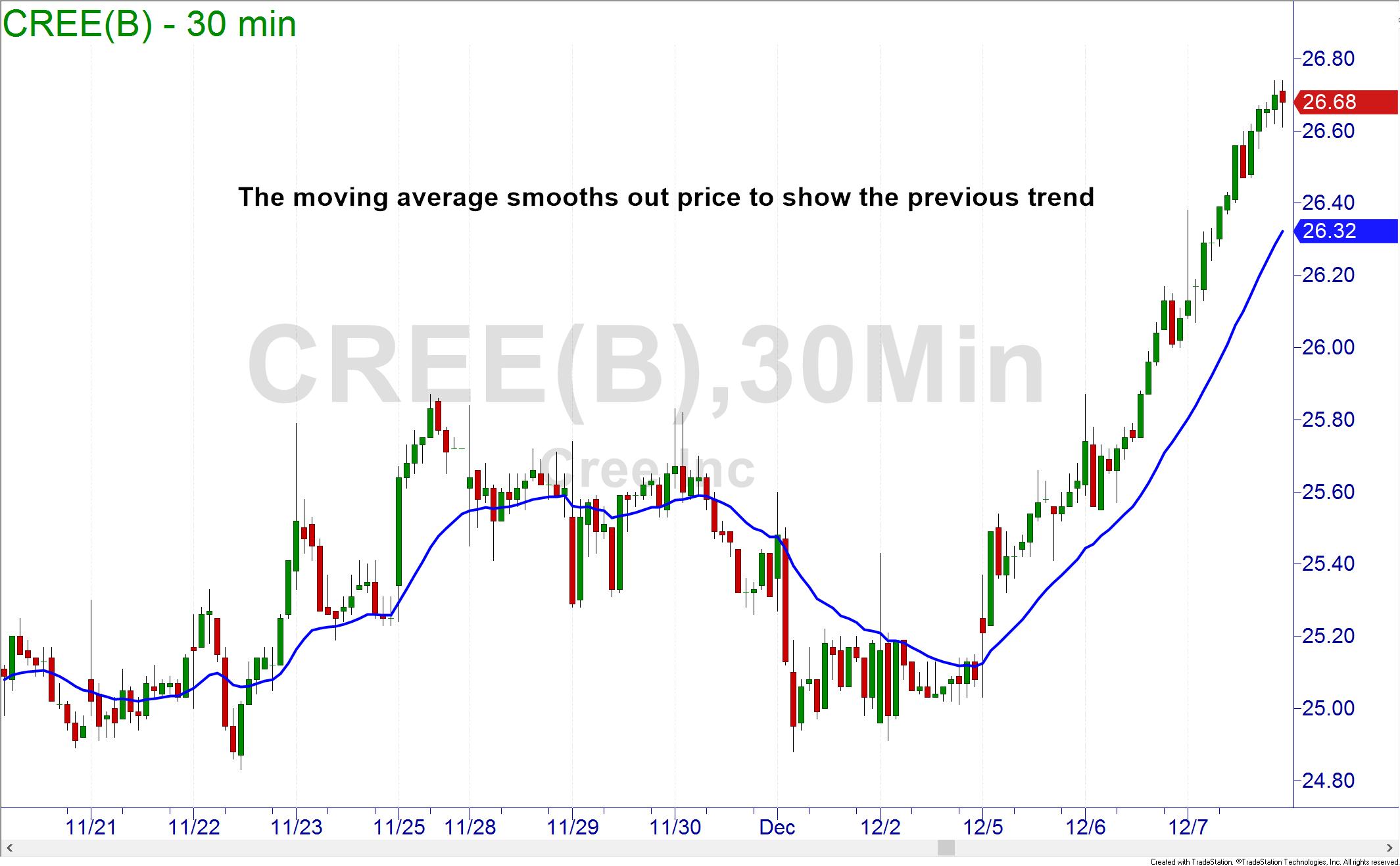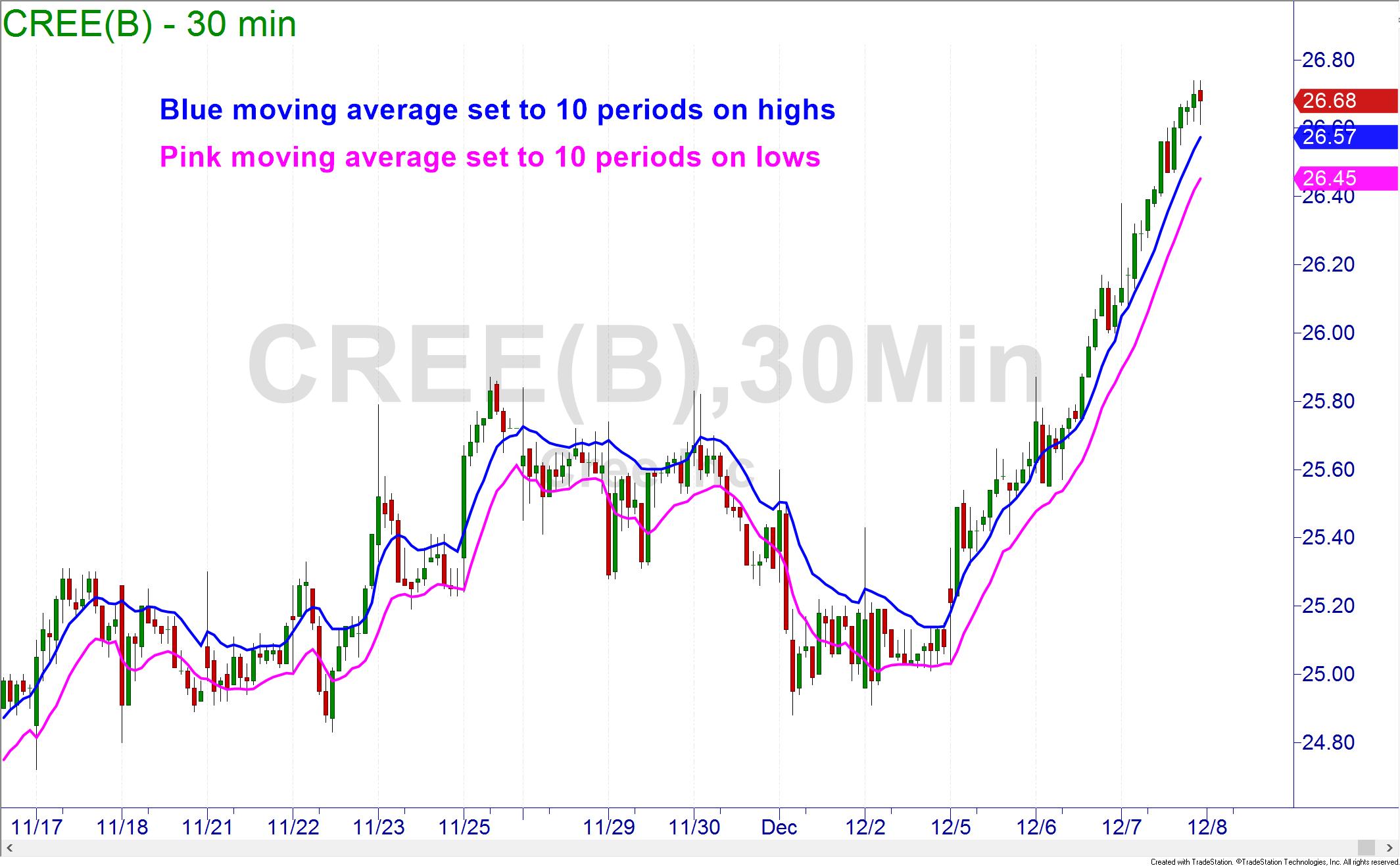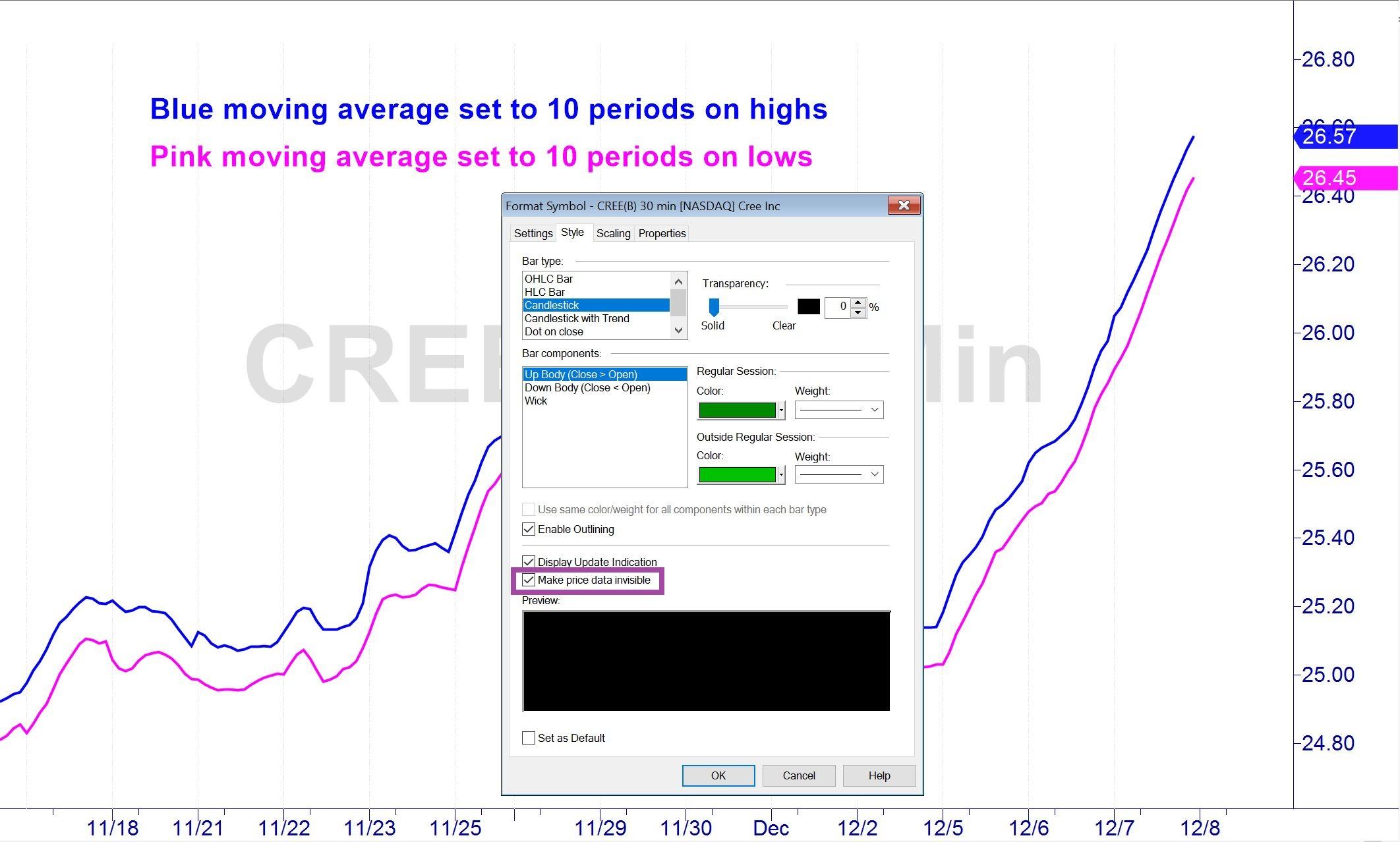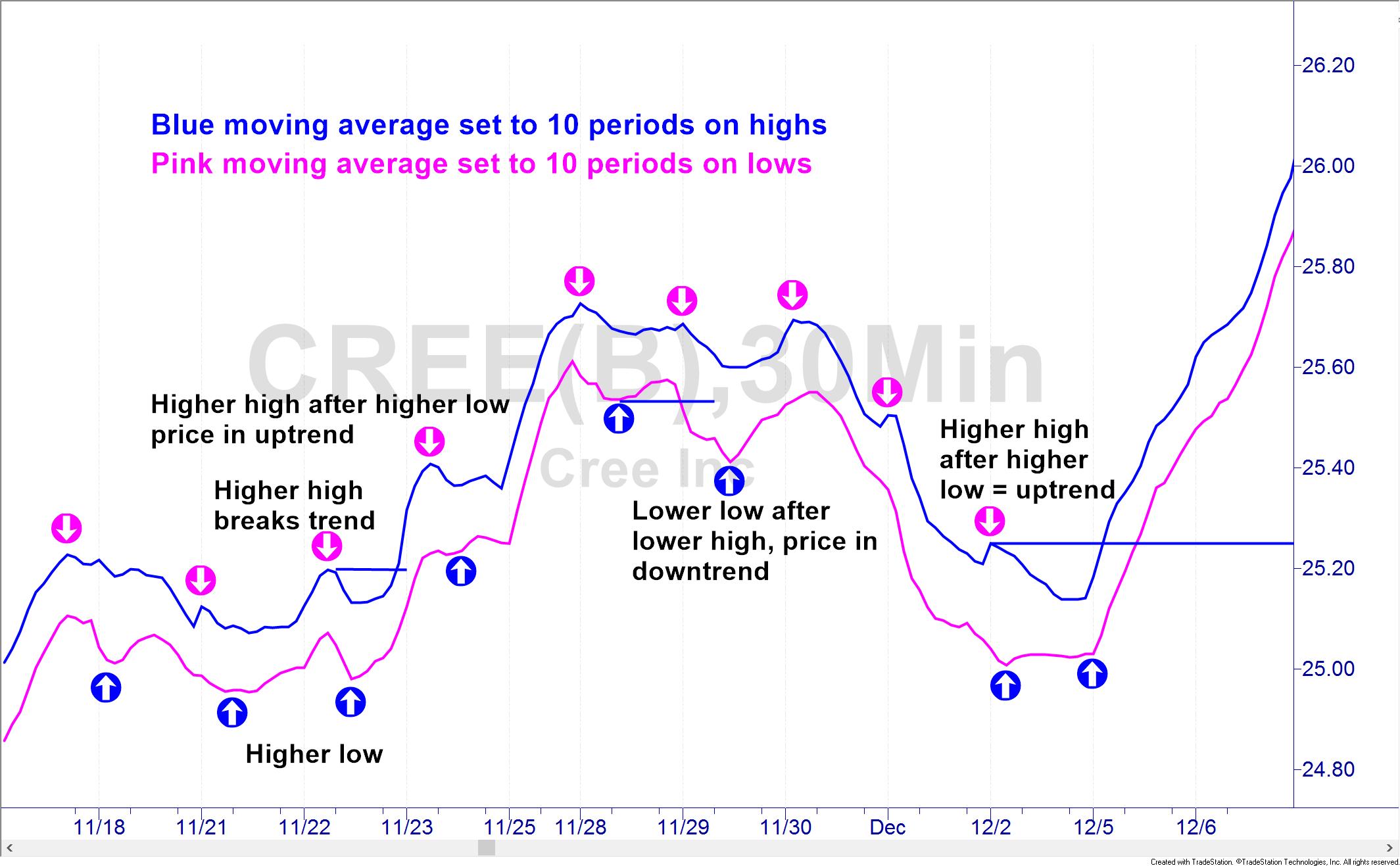Online Trading Academy’s Patented Core Strategy focuses on two major chart components: identifying the trend of the security we are trading and finding the supply or demand zones where we will trade. The trend tells us when we should be a buyer or a seller of the stock while the supply and demand zones tell us at what price we should take action.
These concepts seem simple when explained by a professional trader in a classroom setting but can be difficult to master for new traders, especially if they try to trade on their own. You need to make sure you fully understand the definition of a trend and also be able to know the difference between a trend change and a correction. The former will signal a shift in trading tactics while the latter means that you are looking to re-engage the current trend direction.
A bullish or uptrend is a series of higher highs and higher lows. The key is that you are not officially in an uptrend until you have a higher high after your first higher low. In the uptrend, the lows control. You are in the uptrend until a lower low has been made in price. The lower low by itself only breaks the uptrend, it does not signal a downtrend in price.
A bearish or downtrend is when price makes lower highs and lower lows. The official bearish trend is the first lower low after a lower high. The lower highs define the downtrends. The downtrend continues until it is broken by a higher high. Again, this only breaks the current trend and does not signal a reversal of the trend. Prices can also trend sideways with relatively equal highs and lows.
Many traders struggle with identifying the current trend for the securities they are trading and will often buy in downtrends or sell in uptrends which leads to losses. A reason they sometimes struggle is that they are not able to see the correct highs and lows to determine the trend. They ignore critical points or worse, look too closely at every candle and see too many highs and lows.
There is a simple technique that can possibly ease your search for the trend. You may be familiar with moving averages. Moving averages are normally used to summarize the previous trend of a security. They average the closing prices over a period of time to show traders what the trend has been.
The traditional moving average is based on closing prices. We can change the parameters of the moving average on our chart in order to view highs and lows instead. This can help us blur our vision so that we are focusing on major changes in highs and lows when defining the trend of our securities.
By drawing moving averages on the highs and lows and deleting or hiding the candles on our chart, we can readily see the trend that price is in and may be able to see when that trend is changing much sooner.
This technique is to be used as an odds enhancer. The trends will typically reverse at strong supply and demand zones from larger timeframes. Corrections occur at supply and demand from the smaller timeframes.
Neither Freedom Management Partners nor any of its personnel are registered broker-dealers or investment advisers. I will mention that I consider certain securities or positions to be good candidates for the types of strategies we are discussing or illustrating. Because I consider the securities or positions appropriate to the discussion or for illustration purposes does not mean that I am telling you to trade the strategies or securities. Keep in mind that we are not providing you with recommendations or personalized advice about your trading activities. The information we are providing is not tailored to any individual. Any mention of a particular security is not a recommendation to buy, sell, or hold that or any other security or a suggestion that it is suitable for any specific person. Keep in mind that all trading involves a risk of loss, and this will always be the situation, regardless of whether we are discussing strategies that are intended to limit risk. Also, Freedom Management Partners’ personnel are not subject to trading restrictions. I and others at Freedom Management Partners could have a position in a security or initiate a position in a security at any time.
Editors’ Picks
EUR/USD hovers around 1.0700 ahead of German IFO survey

EUR/USD is consolidating recovery gains at around 1.0700 in the European morning on Wednesday. The pair stays afloat amid strong Eurozone business activity data against cooling US manufacturing and services sectors. Germany's IFO survey is next in focus.
USD/JPY refreshes 34-year high, attacks 155.00 as intervention risks loom

USD/JPY is renewing a multi-decade high, closing in on 155.00. Traders turn cautious on heightened risks of Japan's FX intervention. Broad US Dollar rebound aids the upside in the major. US Durable Goods data are next on tap.
Gold: Defending $2,318 support is critical for XAU/USD

Gold price is nursing losses while holding above $2,300 early Wednesday, stalling its two-day decline, as traders look forward to the mid-tier US economic data for fresh cues on the US Federal Reserve interest rates outlook.
Worldcoin looks set for comeback despite Nvidia’s 22% crash Premium

Worldcoin (WLD) price is in a better position than last week's and shows signs of a potential comeback. This development occurs amid the sharp decline in the valuation of the popular GPU manufacturer Nvidia.
Three fundamentals for the week: US GDP, BoJ and the Fed's favorite inflation gauge stand out Premium

While it is hard to predict when geopolitical news erupts, the level of tension is lower – allowing for key data to have its say. This week's US figures are set to shape the Federal Reserve's decision next week – and the Bank of Japan may struggle to halt the Yen's deterioration.
RECOMMENDED LESSONS
Making money in forex is easy if you know how the bankers trade!
Discover how to make money in forex is easy if you know how the bankers trade!
5 Forex News Events You Need To Know
In the fast moving world of currency markets, it is extremely important for new traders to know the list of important forex news...
Top 10 Chart Patterns Every Trader Should Know
Chart patterns are one of the most effective trading tools for a trader. They are pure price-action, and form on the basis of underlying buying and...
7 Ways to Avoid Forex Scams
The forex industry is recently seeing more and more scams. Here are 7 ways to avoid losing your money in such scams: Forex scams are becoming frequent. Michael Greenberg reports on luxurious expenses, including a submarine bought from the money taken from forex traders. Here’s another report of a forex fraud. So, how can we avoid falling in such forex scams?
What Are the 10 Fatal Mistakes Traders Make
Trading is exciting. Trading is hard. Trading is extremely hard. Some say that it takes more than 10,000 hours to master. Others believe that trading is the way to quick riches. They might be both wrong. What is important to know that no matter how experienced you are, mistakes will be part of the trading process.







